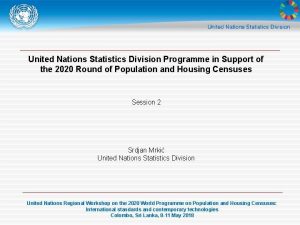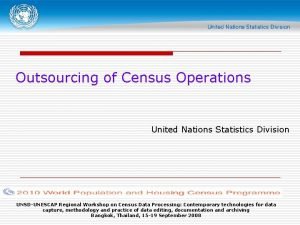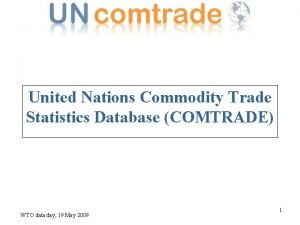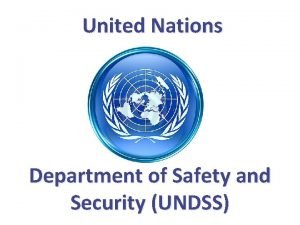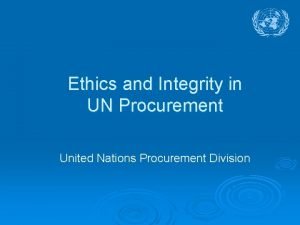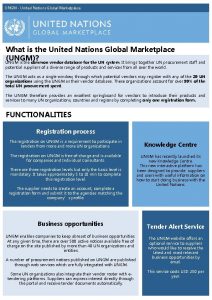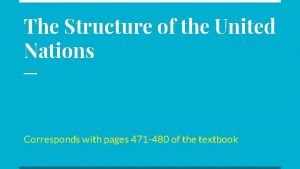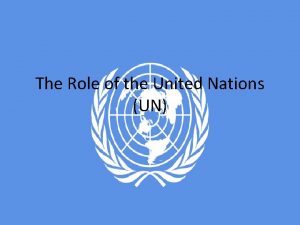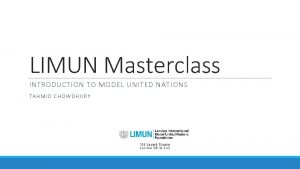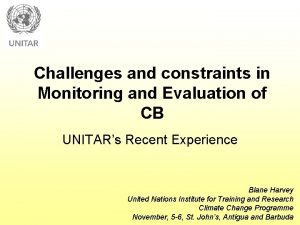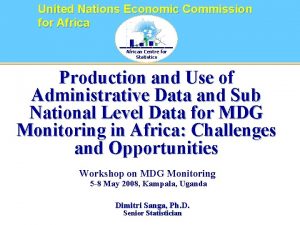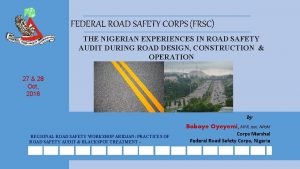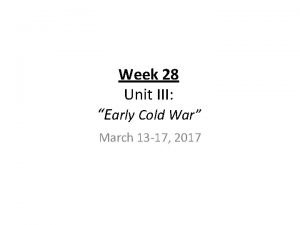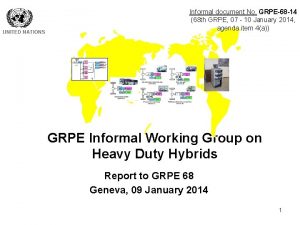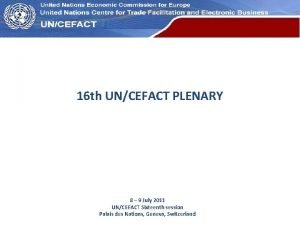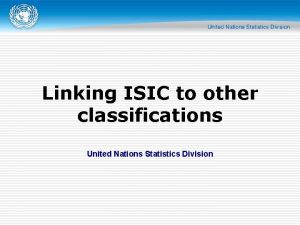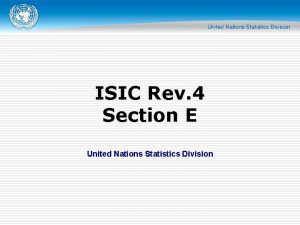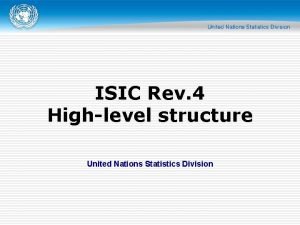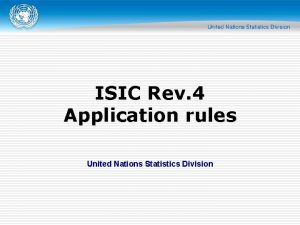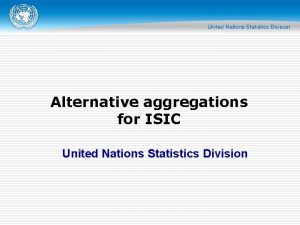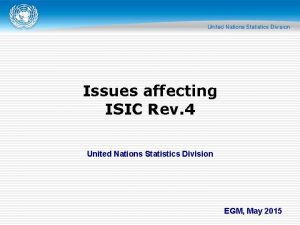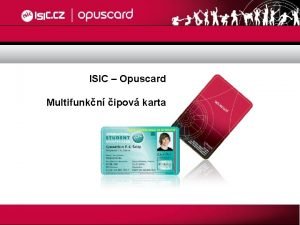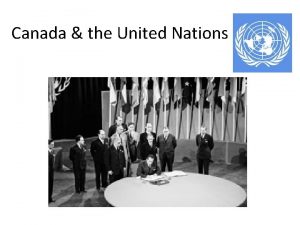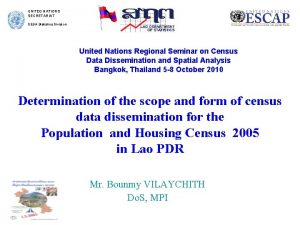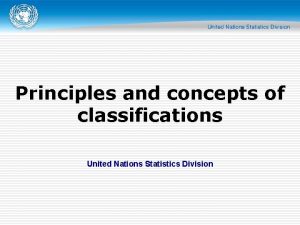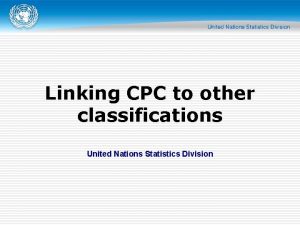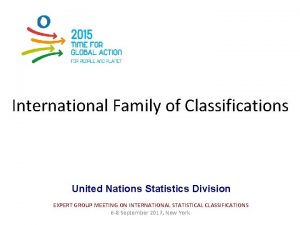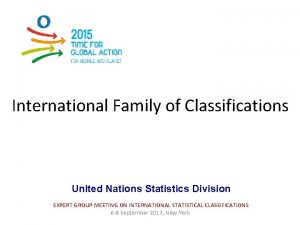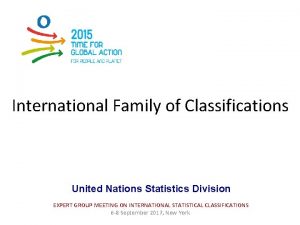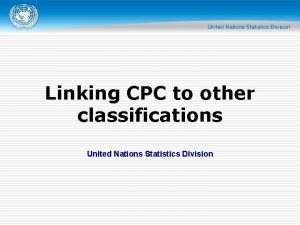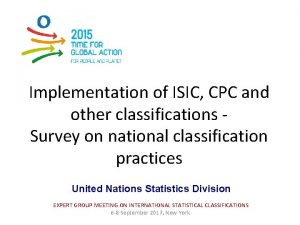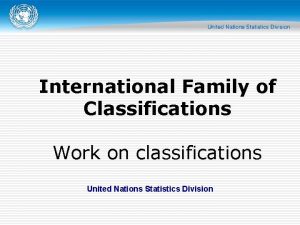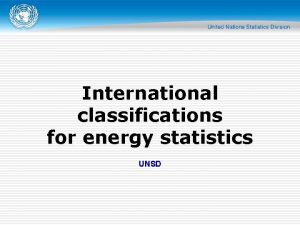National activity classifications and ISIC United Nations Statistics























- Slides: 23

National activity classifications and ISIC United Nations Statistics Division

Purpose of ISIC o Since its creation in 1948, ISIC had two goals: n Provide a tool for international comparison n Provide guidance to countries for a national activity classification structure o ISIC periodically updated to keep it relevant with economic developments. n Side effect: Increasing need for detailed data has lead to more detailed versions of ISIC

National classifications o How can national classifications be structured? 1. Using ISIC as a starting point 2. Based on historical national versions 3. Starting completely from scratch

Using ISIC as a basis o Countries that use ISIC as a basis for their national classification, can do this to varying degrees: 1. Adopt ISIC “as-is” 2. Use the complete ISIC and add subdivisions to reflect nationally important industries (but maintain the ISIC coding structure) – “numerically truncated” back to ISIC 3. As above, but with changes of the coding structure (example: NACE) – requires correspondence table 4. Elevating lower level ISIC categories to higher national levels, (e. g. combine ISIC categories at 2 or 3 -digit level)

ISIC Rev. 4 2310 2391 2392 Manufacture of glass and glass products Manufacture of refractory products Manufacture of clay building materials National classification 23101 Manufacture of flat glass 23102 Shaping and processing of flat glass 23103 Manufacture of hollow glass 23104 Manufacture of glass fibres 23109 Manufacture and processing of other glass, including technical glassware 23910 Manufacture of refractory products 23921 Manufacture of ceramic tiles and flags 23922 Manufacture of bricks, tiles and construction products, in baked clay

Country example: France ISIC Rev. 4 / NACE Rev. 2 0126 Growing of oleaginous fruit CPF rév. 2, 2008 01. 26. 1 Olive 01. 26. 2 Coconut 01. 26. 9 Other

Country example: Norway ISIC Rev. 4 / NACE Rev. 2 5012 / Sea and coastal freight 50. 20 water transport SN 2007 50. 201 Sea and coastal freight water transport, foreign 50. 202 Sea and coastal freight water transport, domestic 50. 203 Tugboats 50, 204 Supply and other sea transport services for offshore installations

Using ISIC as a basis o Countries that use ISIC as a basis for their national classification, can do this to varying degrees: 1. Adopt ISIC “as-is” 2. Use the complete ISIC and add subdivisions to reflect nationally important industries (but maintain the ISIC coding structure) – “numerically truncated” back to ISIC 3. As above, but with changes of the coding structure (example: NACE) – requires correspondence table 4. Elevating lower level ISIC categories to higher national levels, (e. g. combine ISIC categories at 2 or 3 -digit level)

ISIC Rev. 4 2310 2391 2392 Manufacture of glass and glass products Manufacture of refractory products Manufacture of clay building materials NACE Rev. 2 2311 Manufacture of flat glass 2312 Shaping and processing of flat glass 2313 Manufacture of hollow glass 2314 Manufacture of glass fibres 2319 Manufacture and processing of other glass, including technical glassware 2320 Manufacture of refractory products 2331 Manufacture of ceramic tiles and flags 2332 Manufacture of bricks, tiles and construction products, in baked clay

Using ISIC as a basis o Countries that use ISIC as a basis for their national classification, can do this to varying degrees: 1. Adopt ISIC “as-is” 2. Use the complete ISIC and add subdivisions to reflect nationally important industries (but maintain the ISIC coding structure) – “numerically truncated” back to ISIC 3. As above, but with changes of the coding structure (example: NACE) – requires correspondence table 4. Elevating lower level ISIC categories to higher national levels, (e. g. combine ISIC categories at 2 or 3 -digit level)

ISIC Rev. 4 2310 Manufacture of glass and glass products 2391 Manufacture of refractory products 2392 Manufacture of clay building materials National classification 2311 Manufacture of flat glass 2319 Manufacture and processing of other glass, including technical glassware 2390 Manufacture of refractory products and clay building materials

Country example: Singapore ISIC Rev. 4 031 Fishing 0311 Marine fishing 0312 Freshwater fishing 032 Aquaculture 0321 Marine aquaculture 0322 Freshwater aquaculture SSIC 2005 031 Fishing 0310 Fishing 032 Operation of fish hatcheries and fish farms 0320 Fish farming

Using ISIC as a basis o Countries that use ISIC as a basis for their national classification, can do this to varying degrees: 1. Adopt ISIC “as-is” 2. Use the complete ISIC and add subdivisions to reflect nationally important industries (but maintain FULL COMPARABILITY WITH the ISIC coding structure) – “numerically truncated” back to ISIC AT ALL LEVELS 3. As above, but with changes of the coding structure (example: NACE) – requires correspondence table 4. Elevating lower level ISIC categories to higher COMPARABILITY WITH ISICat 2 national levels, (e. g. combine ISIC categories or 3 -digit level) AT HIGHER LEVELS ONLY

Using historical national classifications as a basis o Using non-ISIC based classifications always creates difficulties for international comparison n Correspondence tables are necessary o May limit data conversion due to splits o Efforts are encouraged to line the historical versions up to ISIC n At detailed level (without considering aggregation structures) or n By lining up individual sections

What detail should be considered? o The United Nations Statistical Commission recommends that detailed categories of a national classification can be rearranged and aggregated so that they correspond with the 2 -digit level of ISIC without loss of data. o However, most statistics and users will require more o Countries might want to add detail for industries of particular importance to the national economy. o Countries might want to remove detail for reasons involving size and relevance, confidentiality or homogeneity

What detail should be considered? o Classification for collection may be more detailed than for distribution of data n Using more detail for collection allows for future adjustments if individual industries are growing n Level of detail for publishing depends on type of statistics anyway o No fixed guidelines exist for the proper choice of detail

ISIC oach” ppr “Formal a Based on variables like: • # of statistical units • # of employees • value added With chosen variable, compute ratio R between what is found within a category and average among “siblings”: • R < 0. 5 => delete • R [0. 5, 1. 5] => keep • R > 1. 5 => split Drawbacks: • Hard to define levels/weights • Level of detail influence outcome • Ignore dynamic aspects Possible approaches “Pragmat ic Homogeneity based Based on: Homogeneity ratios (as described in ISIC Rev. 3) Compress or expand classification based the value of these ratios Drawbacks: • Not enough usable data • No definitive and mutually exclusive definition of activities by products approach” Based on: • Input from data users • Special concerns (confidentiality, extra burden, growing industries) • New subclasses only created if user demand • Data users must justify their needs for splits, and estimate number of affected units and turnovers • Take confidentiality and extra burden into account in advance • No strict thresholds Drawbacks: • Challenging and intense discussions, not all user needs can be met

Options to consider or avoid (1) o ISIC structure and definition are based on few criteria (input, process, output, use of outputs) o Should other criteria be added for national purposes, such as private vs. public entity, manufacturing by hand (crafts) vs. manufacturing by machines? n What are the applications?

Options to consider or avoid (2) o Generally, avoid unnecessary addition of detail o When following the ISIC structure and coding system, don’t renumber codes if you want to skip a code number n Regardless of legality, size or other concerns, it is still within conceptual scope, and must be accounted for in the SNA. n Renumbering makes the ISIC link less intuitive

Options to consider (3) o The general recommendation would always be to follow the ISIC structure from higher levels and add detail below (if necessary) or stop at a certain level if ISIC’s detailed categories are absolutely not sustainable for the country o What should be done if different aggregation structures or high-level categories are requested? n E. g. “Petroleum industry” cutting across mining and manufacturing sections (and maybe more) in ISIC

Options to consider (4) o Such groupings do not only introduce new/incompatible concepts, they also alter the meaning/scope of recognized categories (like “manufacturing”) o This affects comparability n Although this could be addressed through correspondence tables, the different use of terminology will cause confusion and lead to errors

Options to consider (5) o Alternative aggregations may be an option in such cases n In particular if the interest is only in publishing this special grouping and not an overall restructuring o Alternative aggregations can describe new industry concepts by adding existing ISIC categories, regardless of their location in the ISIC structure n Example: Information economy (ICT, Content and media) o Still needed: detailed categories for such aggregation n May exist already in ISIC

Rules for good housekeeping o If a category at level n is not further subdivided, the code at level n+1 should be the same code with a “ 0” appended o Use digit “ 9” for residual categories
 United nations statistics division
United nations statistics division United nations statistics division
United nations statistics division Un commodity trade statistics database
Un commodity trade statistics database Undss
Undss Ethics and integrity at the united nations
Ethics and integrity at the united nations United nations
United nations What is ungm
What is ungm Six main organs of the united nations
Six main organs of the united nations What is the role of the united nations?
What is the role of the united nations? Introduction to model united nations
Introduction to model united nations Challenges in monitoring and evaluation
Challenges in monitoring and evaluation United nations zambia
United nations zambia United nations
United nations United nations
United nations Model united nations
Model united nations The agency sponsored by the united nations that compiles
The agency sponsored by the united nations that compiles Functions of federal road safety corps
Functions of federal road safety corps Christian saunders united nations
Christian saunders united nations Cold war
Cold war United nations staff union
United nations staff union United nations
United nations Introduction of united nations
Introduction of united nations United nations
United nations United nations economic commission for europe
United nations economic commission for europe
